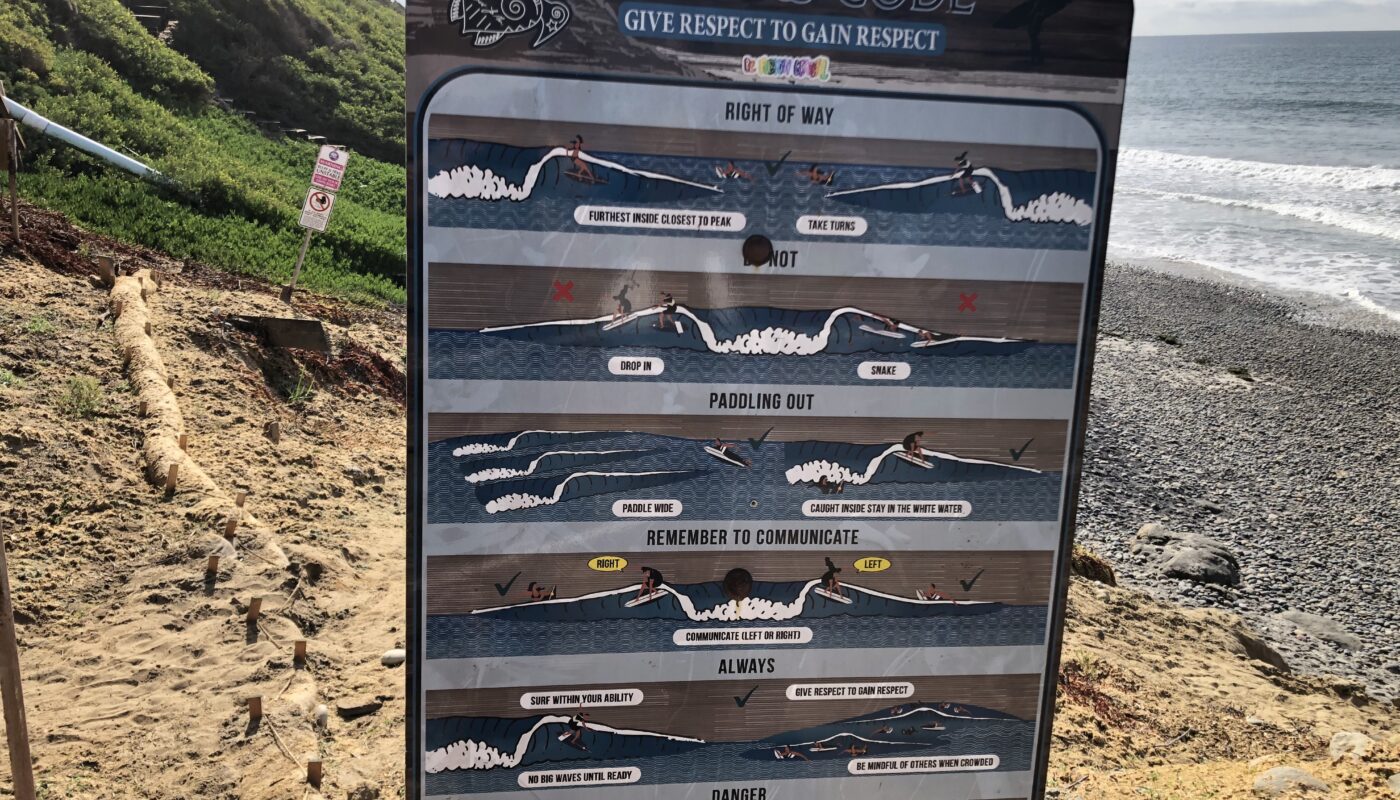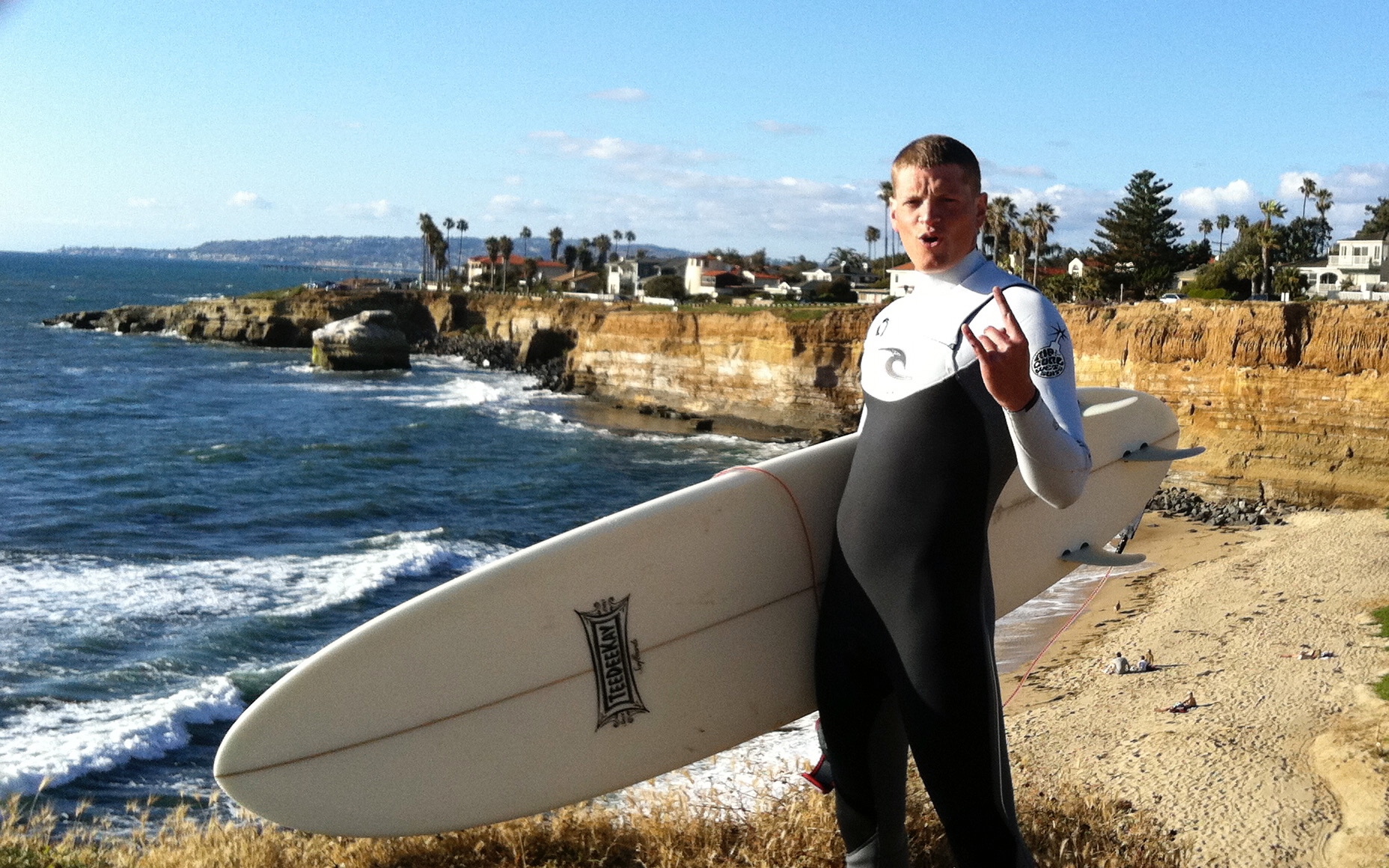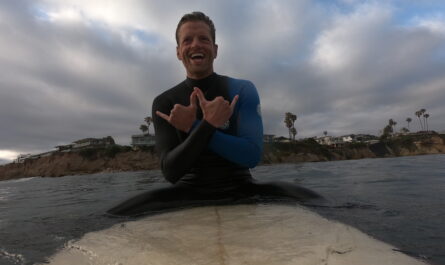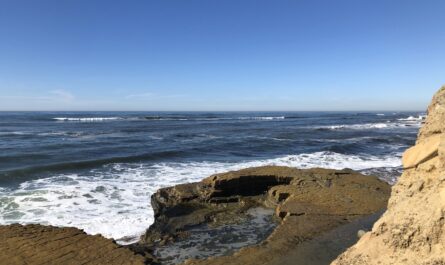Whether you are new to surfing or have been surfing for many years, there are some basic rules of surfing that everyone should follow. By doing so, you’ll stay safe and have fun.
In this article, we’ll cover the basic rules of surfing that everyone should know before paddling out. Some call it a surfer’s code while others call it surfing etiquette. Either way, the basic surfing rules and etiquette are respected by surfers all around the world.
As they say, ‘give respect to gain respect!’
What are the Basic Rules of Surfing Every Surfer Should Know?
There is general surf etiquette and then there are the basic rules of surfing. In this section, we are going back to basics. Experienced surfers should know these already but if you are learning to surf, this list is a must have.
- Right of Way – Just like drivers have the right of way at stop signs, surfing rules are similar. The surfer that is sitting deepest (ie; closest to the peak of the wave) has priority, or right of way. For example, let’s say you are catching a wave on the right hand side of the peak. The surfer on the edge or outside does not have priority. Rather, the surfer on the inside to the left of them will have right of way.
- Don’t Drop In – When you steal a surfer’s right of way, you are probably dropping in on them. This causes you to disrupt their line of surfing. When this happens, you should immediately back off the wave. If you don’t, they might run you down. Not only is this dangerous but it’s the most common reason surfers jaw at each other in the water. Do not break this cardinal rule of surfing.
- Don’t Snake Waves – Don’t be a wave hog. This is what happens if you attempt to snake someone else’s wave. Basically, this is going out of your way to paddle around a surfer already in position with right of way. By stealing their right of way, you are snaking their wave. While it’s not as dangerous as dropping in, it’s downright frustrating and disrespectful.
- Don’t Ditch your Board – Another one of the basic rules of surfing is to hold on to your board. Firstly, never paddle out without a leash. That is dangerous and an easy way to lose or damage your board. Secondly, hold on to your board when duck diving. While you may get under a big wave more easily without your board, a ditched board could hit a surfer paddling behind you even if you are wearing a leash. Know your surroundings.
- Communicate – Lastly, just practice good old fashioned communication. When paddling into a wave, alert any nearby surfers by shouting you are going left or right. Also, if someone doesn’t realize you have right away – give them a hoot so that they back off. In most cases, they don’t see you and will kick out of the wave after hearing you shout.
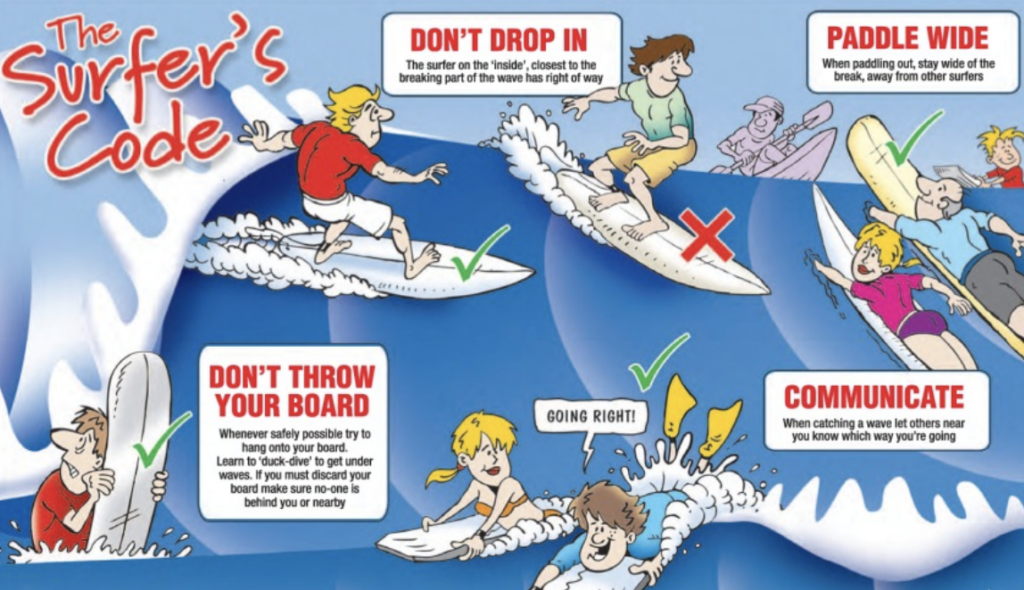
In summary, follow these basic rules of surfing to avoid collisions, conflict and being cussed out! Also commonly understood as not being a kook! To find out if you are kook, take our quiz!
Other Surfing Etiquette
Outside of the basic rules of surfing, there is also some common surf etiquette that all surfers should attempt to follow. Here’s a quick summary:
- Wait your turn after losing a wave – You don’t hold right of way forever so if you attempt to paddle into a wave but miss it, get back in line. The next wave should go to the guy behind you.
- Don’t catch all the waves – In addition to waiting your turn, don’t be a wave hog by sitting on the outside and taking all the waves. Also, don’t immediately catch the first wave after paddling back into the lineup after you just rode one. This will definitely annoy your fellow surfer.
- Know your limitations – Especially when learning, stay away from challenging surf. You’ll just get in the way of other surfers and put everyone at risk.
- Help others – Be nice to other surfers. Offer them help when they are learning or tips on the break if they are new to the wave. The ocean is for everyone so don’t act like you own it!
- Be mindful of the environment – Pick up trash when you see it. The ocean is our playground.
In conclusion, these unwritten rules of surfing are a nice complement to the basic rules of surfing. For a more complete guide on the proper surfing etiquette, check out The Surfing Handbook.
Surfing Rules in San Diego
Fortunately, the basic rules of surfing are more or less a global handbook for surfing. Surfers all over the world follow the same surfing etiquette and rules. That’s one the great things about surfing. It’s a language spoken all over the world. The rules of surfing are no different in San Diego than they are in Australia. While not a rule, one different aspect of surfing in different geographical locations is that the waves in Hawaii are measured differently than San Diego along with the rest of the world.
Otherwise, be kind to your fellow brother in the water whether surfing in San Diego or not!
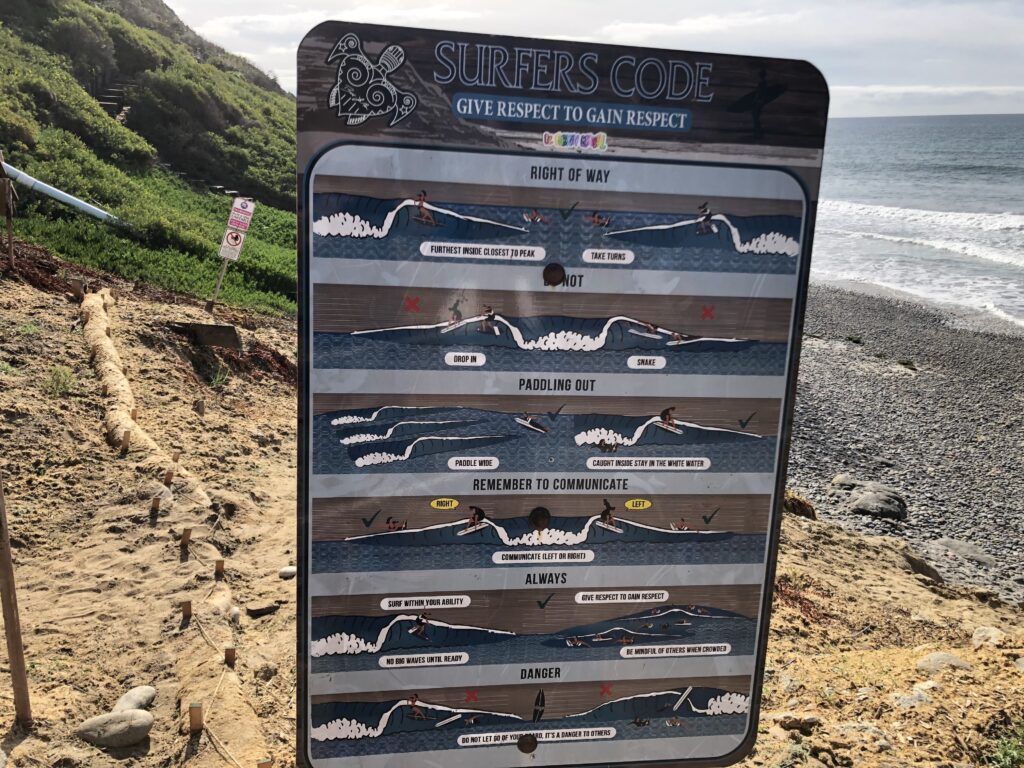
For more San Diego wave and surf knowledge, subscribe below!
Related: How to Spot a Rip Tide while Surfing


